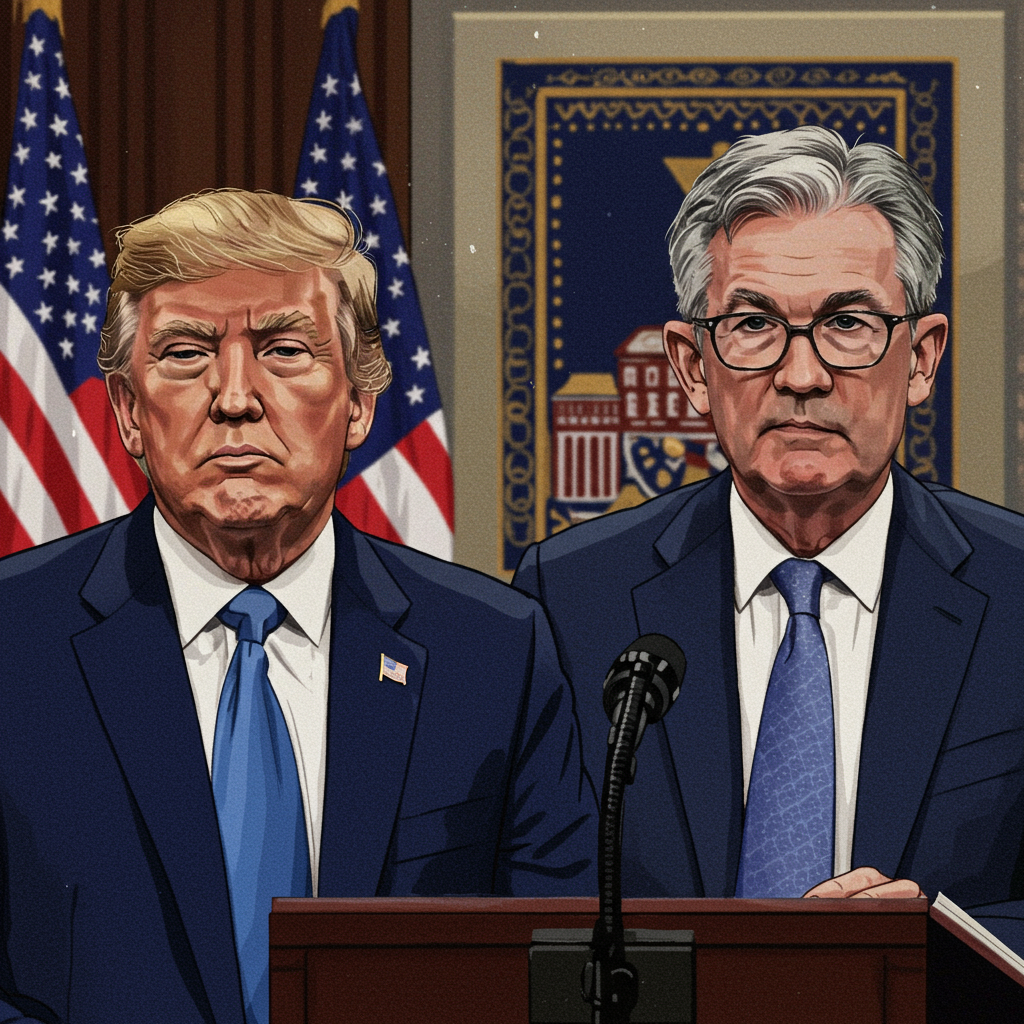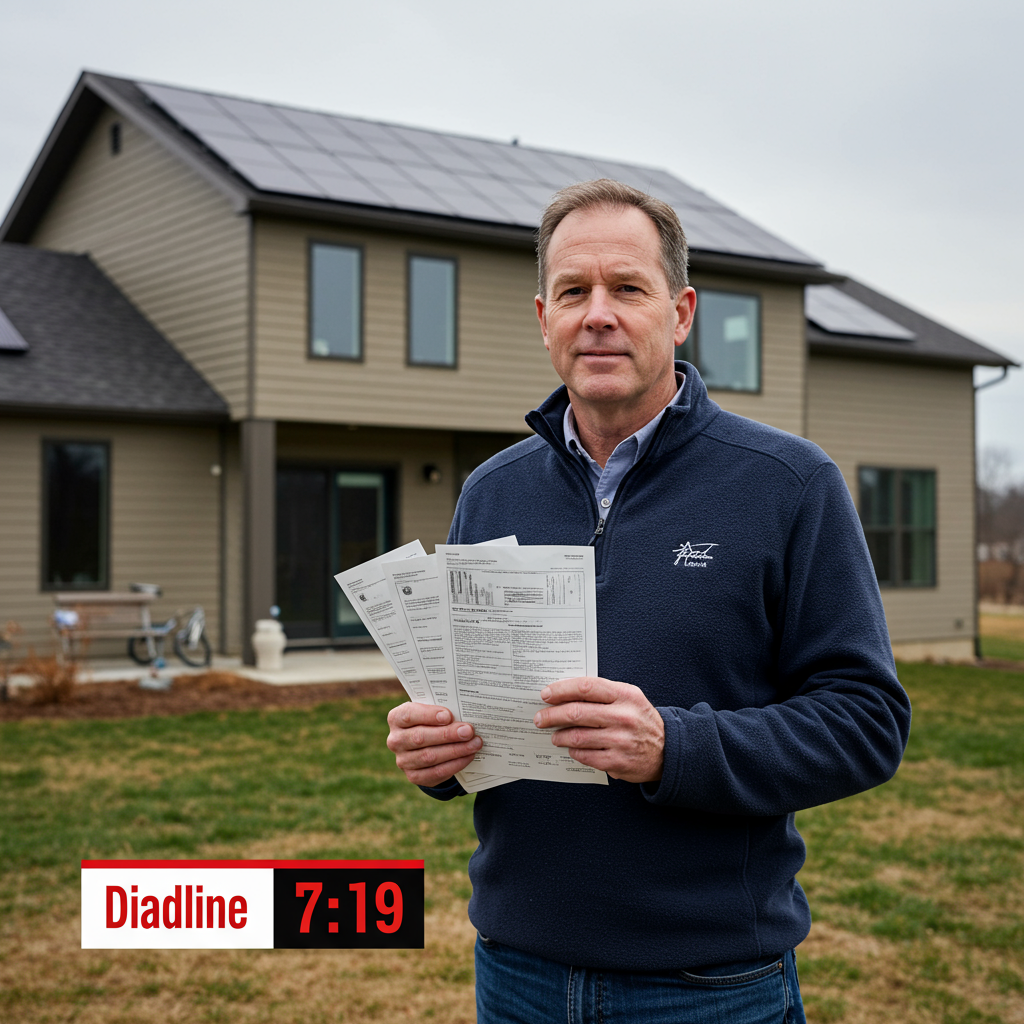Former President Donald Trump is signaling a move that could redefine the relationship between the White House and the nation’s central bank. By potentially naming his pick to lead the Federal Reserve well over a year before current chair Jerome Powell’s term expires, Trump is proposing an action unprecedented in the Fed’s 111-year history. This early announcement could effectively create a “shadow” Fed chair, a concept raising significant concerns among economists and former central bank officials. Critics warn such a step risks undermining the current chair and injecting damaging uncertainty into the U.S. economy, a situation that has concerned experts before.
Trump’s frustration with the Federal Reserve’s monetary policy remains clear. He has consistently pressured Chair Powell to lower interest rates, arguing that higher borrowing costs hurt the economy and increase government debt payments. Despite the Fed’s stated focus on its dual mandate of stable prices and maximum employment, Trump has openly criticized Powell, recently referring to him as a “numbskull” and indicating he is seeking a successor specifically committed to cutting rates quickly. This explicit political criterion for the next Fed head marks a departure from the traditional emphasis on economic expertise and independence.
The Novel Concept of a “Shadow” Fed Chair
The idea of a “shadow” Fed chair first emerged publicly last year, floated by Scott Bessent, who is now being considered for the Treasury Secretary role under Trump. The concept involves naming a successor long before the current chair’s departure, placing that individual in a position to influence or comment on monetary policy discussions while still outside the formal structure. This unprecedented timing creates a unique dynamic. Historically, U.S. presidents have waited until the final months of an incumbent Fed chair’s term to announce a nominee, maintaining focus on the current leadership until a smooth transition is near. An early announcement fundamentally shifts this dynamic.
Experts argue that having a designated successor openly discussing potential policy changes could create confusion. Alan Blinder, a former Fed Vice Chair during the mid-1990s, called the idea “absolutely horrible.” He explained that having two influential voices speaking on monetary policy simultaneously, especially with differing views likely given Trump’s explicit criteria, would confuse financial markets. Greg Valliere, chief U.S. policy strategist at AGF Investments, echoed this, stating it’s a “terrible idea, sure to annoy and confuse financial markets.”
Risks to Fed Independence and Market Stability
The primary concern surrounding a “shadow” Fed chair is the potential damage to the central bank’s vaunted independence. The Federal Reserve operates independently of direct political control to make decisions based on economic data rather than short-term political pressures. Critics fear that a nominated successor actively speaking out or even just being known as Trump’s pick could politicize the institution months before any formal change occurs. Valliere warned that it could turn Trump into a “monetary back-seat driver,” second-guessing Fed policies and causing “considerable damage to the Fed’s independence.”
Kathryn Judge, a Columbia Law School professor researching financial markets, noted the uncertainty this creates. “We don’t know what the ramifications would be or what they’d be willing to do, because this is unprecedented,” she stated. Joe Brusuelas, RSM chief economist, cautioned that undermining Chair Powell could backfire, potentially causing the very interest rates Trump seeks to lower to rise. Brusuelas believes weakening the current chair’s authority harms everyone and could lead to a weaker dollar alongside higher rates.
Adding complexity, even within the Fed, there are differing views on the urgency of rate cuts. Christopher Waller, a current Fed Governor and reported contender for the chair position, recently suggested the central bank should consider cutting rates as soon as July. Waller, while not endorsing Trump’s call for “supersized” cuts, argued for acting “now, don’t wait,” citing signs of softening in the labor market as a key concern warranting preemptive action. This stance aligns more closely with Trump’s desire for lower rates than Powell’s consistent position of waiting to assess economic data. The timing of Waller’s comments, amidst Trump’s search for a nominee, raises questions about the interplay between policy views and political considerations.
Potential Candidates and Limited Immediate Power
Several individuals are reportedly on Trump’s shortlist for the top job. Beyond Bessent and Waller, potential candidates include former Fed Governor Kevin Warsh, current Director of the White House National Economic Council Kevin Hassett, and David Malpass, whom Trump previously nominated to head the World Bank. These names represent a range of backgrounds and potential policy approaches, though Trump’s stated preference for rate cuts likely narrows the field.
Despite the concerns about influence, a “shadow” Fed chair would have no formal power until confirmed by the Senate and officially sworn in. Federal Reserve monetary policy decisions are made by the Federal Open Market Committee (FOMC), a 12-member voting committee. The chair leads the committee and holds significant sway but cannot unilaterally dictate policy or veto votes. They could, in theory, even be outvoted by other members.
However, the risk isn’t about formal power. As former Vice Chair Blinder points out, the danger lies in a designated future chair publicly contradicting the current Chair or existing FOMC members. Such actions could provoke the current policymakers, many of whom would still be serving when the new chair takes over. This tension could open the door to internal dissent or a subtle revolt against the new chair from day one, a rare but damaging occurrence in Fed history. While some, like Chicago Fed President Austan Goolsbee, downplayed the potential impact on current policymakers, others believe the public perception and potential for market confusion are significant risks.
Markets reacted to the news of a potential early announcement with some shifts. Following reports from the Wall Street Journal that Trump could name a nominee as early as this summer, the U.S. dollar index dropped slightly, reaching its lowest level since February 2022, potentially reflecting investor discomfort with the uncertainty. However, the stock market appeared largely unfazed, with indices moving higher, suggesting some investors may anticipate lower rates under a new Fed chair, or that the long timeline reduces immediate concern.
Ultimately, announcing a “shadow” Fed chair would be an unprecedented political maneuver with uncertain economic consequences. It reflects a fundamental tension between a president seeking immediate policy outcomes and a central bank designed for independent, long-term economic stewardship. The move could test the resilience of the Fed’s independence and potentially introduce months of political tension and market speculation before any leadership change even occurs.
Frequently Asked Questions
Why is Trump’s potential early Fed chair nomination unprecedented?
U.S. presidents traditionally announce their pick for Federal Reserve chair only in the final months of the incumbent’s term. President Trump’s reported plan to name a nominee with over a year remaining in Chair Jerome Powell’s term breaks with this historical norm. This early announcement creates the novel situation of a designated successor existing publicly while the current chair still leads the institution.
What are the main risks associated with a “shadow” Fed chair?
Experts warn that having a “shadow” Fed chair could confuse financial markets by introducing conflicting voices on monetary policy. It risks undermining the authority of the current chair and damaging the Federal Reserve’s independence by politicizing the institution well before a leadership change. This uncertainty could potentially destabilize the economy and even cause undesirable market reactions, such as rising interest rates.
How could a Fed chair nominee influence policy before taking office?
While a nominated Federal Reserve chair has no formal power until confirmed by the Senate and sworn in, their public statements or perceived alignment with the president’s goals could still exert influence. They could signal future policy directions, potentially conflicting with the current Fed’s messaging. This could provoke existing FOMC members and create challenges for the new chair once they formally take over.




